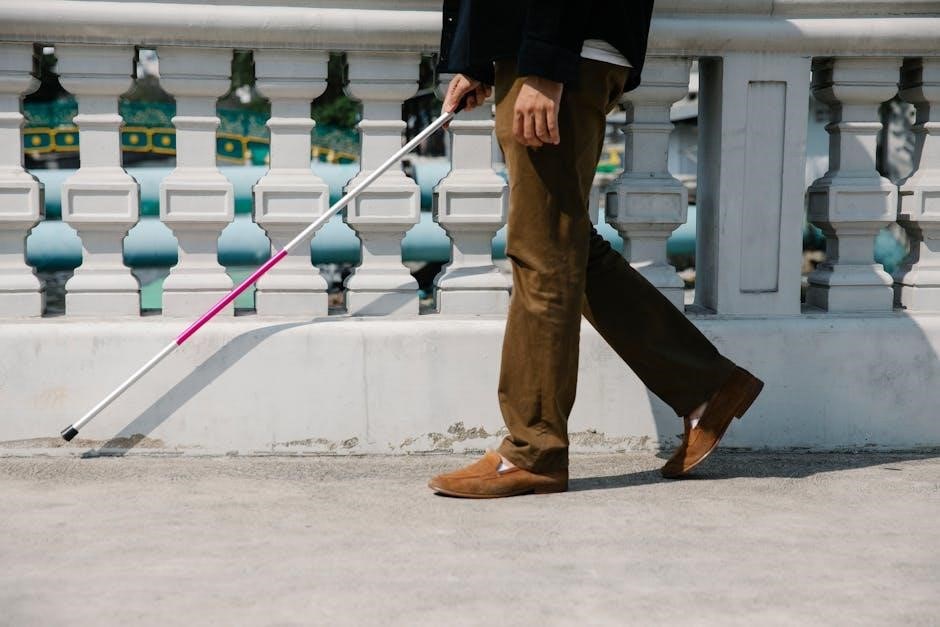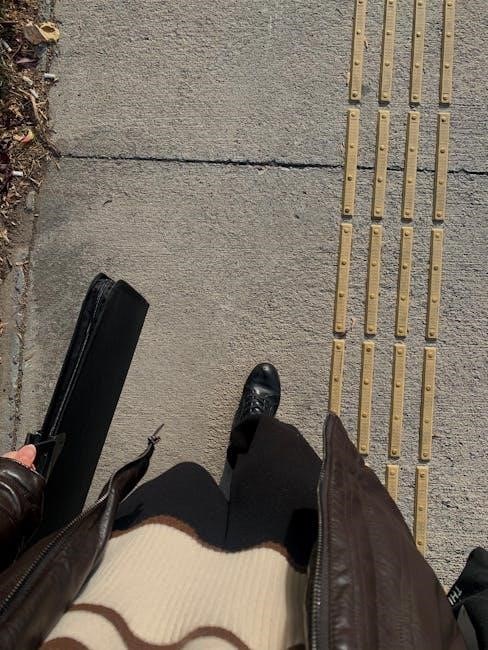shoe width guide
Summary
Discover the ultimate shoe width guide to solve your fit issues. Learn how to measure and choose the perfect size for comfort and style.

Discover the importance of shoe width for optimal comfort and foot health. This guide helps you understand how to measure and choose the perfect fit for your feet.
Why Shoe Width Matters for Comfort and Foot Health
Proper shoe width ensures comfort and prevents foot health issues. Tight shoes can cause discomfort, while overly loose ones may lead to poor support. Incorrect widths can result in toe deformities or persistent foot pain. Ensuring the right fit promotes proper foot alignment, reduces fatigue, and enhances overall walking or running performance. Proper fit is essential for daily activities and sports, ensuring optimal comfort and health.
How to Measure Your Foot Width
Place your foot flat on the ground, measure the widest part using a tape measure or ruler, and ensure accuracy by standing normally and considering orthotics.
Step-by-Step Guide to Accurate Foot Measurement
To measure your foot width accurately, start by standing naturally and wearing the socks you plan to use with the shoes. Place your foot flat on the ground, ensuring your weight is evenly distributed. Use a flexible tape measure or ruler to find the widest part of your foot, typically just below the toes. Measure both feet, as they may differ slightly, and record the larger measurement. This ensures a comfortable and proper fit when selecting your shoe width.
Tools and Techniques for Precise Foot Width Assessment
For accurate foot width measurement, use a flexible tape measure or ruler. Place your foot flat on the ground, ensuring the tape measure aligns with the widest part of your foot. You can also use a printable foot measurement template or a Brannock device for added precision. Trace the outline of your foot on paper and measure the width at the widest point for reliable results.
Mens Shoe Width Chart
Discover the range of men’s shoe widths, from narrow (AA) to extra-wide (4E). This chart helps you find your perfect fit based on precise foot width measurements.
Understanding Mens Shoe Width Letters (AA, A, B, C, D, E, EE, EEE, 4E)
Mens shoe width letters range from AA (narrowest) to 4E (widest). Each letter represents a specific width measurement, ensuring a comfortable fit. AA and A are for narrower feet, while E, EE, EEE, and 4E cater to wider feet. Standard width is D, offering a balance for average foot widths. These letters help guide men to their ideal shoe fit.
Converting Foot Measurements to Mens Shoe Width Sizes
Measure your foot width at its widest point. Use the chart to match your measurement with the corresponding shoe width letter. For example, 3-1/4 inches is AA, 3-7/16 inches is A, 3-5/8 inches is B, 3-13/16 inches is C, 4 inches is D, and 4-1/8 inches is E. This helps men find their ideal fit based on precise measurements.

Womens Shoe Width Chart
Explore women’s shoe width charts to find your perfect fit. Measurements correspond to sizes from AA to EEE, ensuring comfort and proper support. Try shoes on both feet for accuracy.
Understanding Womens Shoe Width Letters (AA, A, B, C, D, E, EE, EEE, 4E)
Women’s shoe widths are labeled from AA (narrowest) to 4E (widest). Standard width is B, with C and D offering more room. E, EE, and EEE provide extra width, while 4E is the widest option. These letters help determine the perfect fit for comfort and foot health, ensuring proper support and alignment.
Converting Foot Measurements to Womens Shoe Width Sizes
Measure your foot’s widest part and compare it to the chart. For women, widths range from AA (narrowest) to 4E (widest). Standard width is B, with C and D offering more room. E, EE, and EEE provide extra width, while 4E is the widest option. Use this guide to ensure a comfortable and supportive fit tailored to your foot shape.

Kids Shoe Width Guide
Ensure proper growth and comfort with the right fit. Measure foot width accurately and choose sizes that align with normal ranges for children’s shoe widths.
Kids Shoe Width Chart and Normal Width Ranges
A kids shoe width chart helps determine the ideal fit by measuring foot width at the widest point. Normal ranges vary by age and size, ensuring proper growth and comfort. Use a ruler or tape measure to assess width accurately. Charts often include narrow, medium, wide, and extra-wide options, catering to different foot shapes and sizes. Always consider brand-specific sizing variations for the best fit.
How to Measure and Choose the Right Shoe Width for Children
To ensure proper fit, place your child’s foot flat on the ground and measure the widest part using a tape measure or ruler. Compare the measurement to a kids shoe width chart to determine narrow, medium, wide, or extra-wide sizes. Try shoes on both feet, allowing a small space for growth. Always check brand-specific sizing guides, as widths can vary.

Shoe Width and Activity
Shoe width significantly impacts performance and comfort across various activities, ensuring proper fit and support for sports, hiking, and everyday wear, adapting to each activity’s demands.
Choosing the Right Shoe Width for Different Activities
Shoe width plays a crucial role in performance and comfort during various activities. For sports, opt for wider widths to accommodate toe movement. Hiking shoes may require a snug fit for stability, while casual wear can vary based on personal comfort. Always consider the activity’s demands to ensure proper support and flexibility, enhancing overall performance and reducing discomfort.
How Shoe Width Affects Performance and Comfort in Sports
Proper shoe width is vital for athletic performance and comfort. Narrow widths can restrict toe movement, causing discomfort and potentially leading to injuries. Wider widths provide better toe splay, enhancing balance and stability during sports. Optimal width ensures reduced friction, prevents blisters, and allows natural foot mechanics, improving overall performance and endurance in various athletic activities.
Understanding Shoe Width Letters
Shoe width letters (AA, A, B, C, D, E, EE, EEE, 4E) indicate the width of a shoe, with more letters signifying a wider fit, ensuring proper comfort and foot health.
What Do Shoe Width Letters Mean? (D, B, E, EE, etc.)
Shoe width letters like D, B, E, and EE represent specific measurements. D is standard for men, while B is standard for women. E and EE indicate wider widths, with more letters meaning a larger fit. These letters help ensure proper comfort and prevent issues like tightness or excessive movement in shoes.
How Shoe Width Letters Correlate to Foot Width Measurements
Shoe width letters correspond to specific foot width measurements. AA is the narrowest, while 4E is the widest. Each letter represents incremental increases in width, ensuring proper fit. For example, D is standard for men, B for women, and E, EE denote wider widths. This system helps match foot width to shoe size for optimal comfort and foot health.

Common Mistakes in Shoe Width Selection
Ignoring foot shape, not measuring both feet, and assuming width from size labels are common errors. These oversights can lead to poor fit and discomfort.
Why People Often Get Shoe Width Wrong
Many individuals overlook proper foot measurements, relying instead on standard sizes. Differences in brand sizing and not trying shoes on both feet contribute to errors. Lack of awareness about width letters (e.g., D, E, EE) and not considering factors like foot shape or sock thickness exacerbate the issue. Without accurate measuring tools or guidance, people often guess their width, leading to discomfort and poor fit.
How to Avoid Common Mistakes When Choosing Shoe Width
To avoid common mistakes, measure your foot width accurately using a tape measure or ruler. Always try shoes on both feet, as sizes can differ. Refer to shoe width charts to match your measurement with the correct letter (e.g., D, E, EE). Be aware that brands vary in sizing, so use their specific width guides. Visit a professional fitter for precise recommendations.

Shoe Width Guide for Stretching Shoes
Stretch shoes using spray and plugs for tight spots. Wear them consistently to maintain shape; This method ensures a wider, comfortable fit without damaging the material.
How to Stretch Shoes for a Wider Fit
Start by spraying shoe stretching spray inside and outside, focusing on tight areas. Insert spot stretching plugs where pressure is felt. Wear the shoes daily to maintain the new shape. This method ensures a wider fit without damaging the material, providing comfort and relief for tighter shoes.
Products and Techniques for Expanding Shoe Width
Use shoe stretchers or shoe trees to widen tight areas. Apply shoe stretching sprays to soften materials. Insert spot stretching plugs for targeted pressure. Freeze shoes overnight with a sealed bag of water inside to naturally expand the material. Regular wear after stretching helps maintain the new shape for lasting comfort and a wider fit.
Shoe Width Guide by Brands
Shoe width varies by brand, with some offering extended sizes. Brands like New Balance and ASICS provide narrow to extra-wide options, ensuring a personalized fit for all foot shapes.
How Different Brands Measure and Label Shoe Width
Brands use various methods to measure and label shoe width, often employing letter codes like AA, A, B, C, D, E, EE, EEE, and 4E. Some brands, such as New Balance and ASICS, offer narrow to extra-wide options, while others may use terms like “Narrow,” “Standard,” “Wide,” or “Extra Wide.” The lack of a universal standard means sizing can vary significantly between brands, potentially causing confusion for consumers. Always check the specific brand’s sizing chart for accurate measurements.
Popular Brands Offering Extended Shoe Width Options
Brands like New Balance, ASICS, and Clarks offer extended shoe width options, catering to diverse foot shapes. New Balance provides sizes from narrow to extra-wide, while ASICS includes options like “Narrow” and “Wide.” Clarks and Ecco are known for their comfortable, roomy designs. These brands ensure a snug, supportive fit for various foot widths, enhancing comfort and performance in both casual and athletic settings.

Shoe Width Guide for Online Shoppers
Learn how to measure your foot width accurately and choose the right shoe size using our guide. Ensure a perfect fit by trying shoes on both feet and utilizing size charts.
How to Measure and Choose the Right Shoe Width Online
To measure your foot width, place your foot on a flat surface and wrap a tape measure around the widest part. Compare this measurement to the shoe width chart provided by the retailer. Ensure to try shoes on both feet, as sizes may vary. Use socks and orthotics you plan to wear for accuracy. Check customer reviews for fit feedback and consider brands offering extended width options for the best comfort and support.
Tips for Ensuring the Best Fit When Buying Shoes Online
Use a shoe size conversion chart to compare international sizes. Measure your feet at the end of the day for accuracy. Check the retailer’s return policy for easy exchanges. Read customer reviews for insights on fit and comfort. Select brands offering extended width options to ensure a perfect match for your foot width and shape.
Finding the perfect shoe width ensures comfort and foot health. Use our guide to measure accurately and select the ideal fit for your lifestyle and activities.
Final Tips for Finding Your Perfect Shoe Width
Always measure your feet regularly, as size can change over time. Try shoes on both feet, considering your larger foot for the best fit. Wear the same socks you plan to use and don’t forget orthotics. Ensure the shoe width aligns with your foot’s natural shape for optimal comfort and support.
Accurate foot measurement is crucial for the right fit. Consider both length and width, and try shoes on both feet. Wear the same socks and orthotics you plan to use. Use reliable shoe width charts for men, women, and kids. Remember, brands may vary, so check conversion guides. Prioritize comfort and proper alignment for long-term foot health and performance.